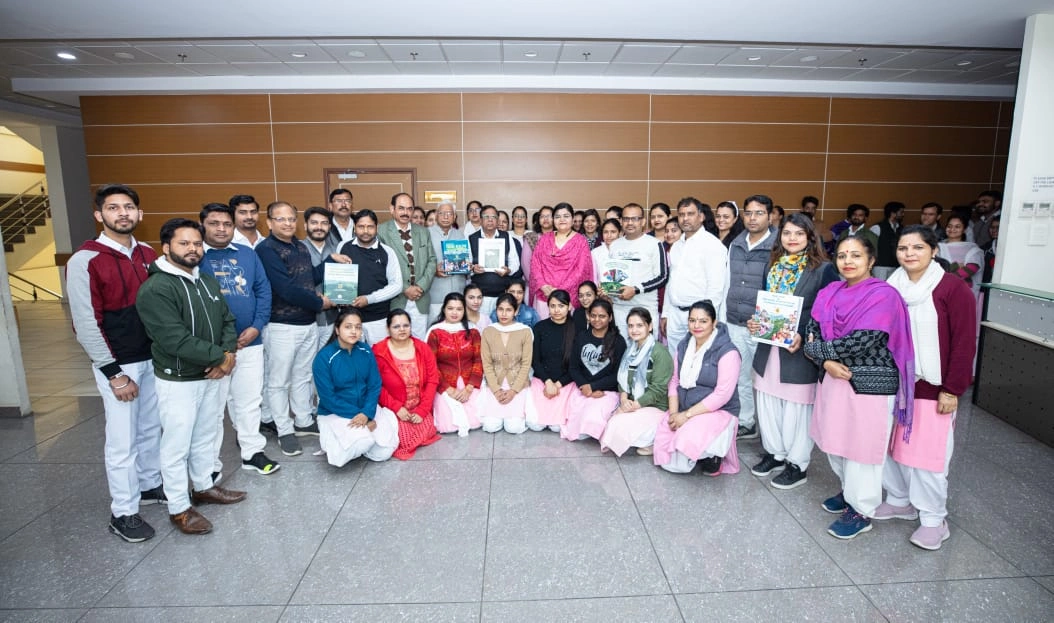World Herbal Encyclopedia
World Herbal Encyclopedia (WHE)
“Only knowledge can be treasured for eternity.”
World Herbal Encyclopedia is a new dimension of studying medicinal plants. This series is conceptualized to address the current need for a centralized database of medicinal plants used all over the world for therapeutic purposes. WHE is composed of 111 volumes, in which the initial 102 volumes provide information on medicinal plants from all the kingdoms in which plants have been arranged alphabetically from lower to higher plant groups. Volume number 103 lists all the plants' annexures that hold medicinal utilities in some or other form. The next seven volumes describe the history of the medicinal systems of the world. The last volume presents the history of the World Herbal Encyclopedia project itself. This book series also introduces the morphological identification of medicinal plants using their ‘Vedic names’ along with their original botanical illustrations.
WHE is a revolutionary step in medicinal science that will help millions of professionals, students, and curious minds embrace therapeutic plants in their truest identity.

Some distinct aspects of this series are:
- The compendium educates readers about ~50,000 medicinal plants across the globe.
- It archives ~15,000 medicinal plants available in India.
- It is the only documentation on medicinal plants that describes ~7,500 plant genera in all groups of the plant kingdom, including the freshwater and sea plants (algae), fungi, lichens, bryophytes, pteridophytes, gymnosperms, and angiosperms.
- This encyclopedia depicts ~12 lakh vernacular names and ~2.5 lakh synonyms of ~50,000 medicinal plants of the world in ~2,000 languages spoken across the globe.
- It funnels knowledge from ~6 lakh bibliographic sources such as authentic websites, books, research publications, etc., out of which ~4.5 lakh have been assigned unique reference codes.
- Likewise, it takes authentic information from ~2.50 lakh folk formulations and original manuscripts as old as 200 BC.
- It conveys native medicinal knowledge from ~2000 tribes belonging to different countries of the world.
- This reserve of information has nearly 35,000 canvas paintings and 30,000 line drawings of medicinal plants. This is an incredible attempt since very few herbal works depict paintings of plants as a key to identification.
- Some volumes of this series unfold the medicinal history of ~9 medicinal systems and ~964 healing practices of different communities or ethnicities of the world.
- It is the first treatise where approximately 50,000 medicinal plants of the world are given entirely new Sanskrit nomenclature (in the binomial pattern) from family up to genus and species level, describing the base of origin of nomenclature in scientific terms. Here, the origin of the names of the different families and genus are comprehensively described.
- This series provides a brief description of the plant, etymology of its family, etymology of its genus, synonyms, common English names, vernacular names, habitat and distribution, botanical description, therapeutic properties, toxicological study, chemical constituents, pharmacological profile, parts used, and medicinal uses from different medicine systems as well as in folk medicines which are popular across the world along with modern researches in the respective areas.
- This series presents an unprecedented opportunity to access nearly all the world's medicinal plants in one comprehensive resource, which was previously unattainable in any existing text. These plants can now be systematically investigated for their potential to address various health conditions through scientific exploration.
- In WHE, plants have been explained elaborately from the point of view of traditional users and their classical illustrations to modern scientific experiments. This unique work brings forth a productive and appropriate treatment methodology for simple to severe diseases known from antiquity until now.
- Also, the history of traditional medicinal systems of different continents and their status in conventional medicine in the present era are clearly described.
WHE is a masterpiece of unmatched educational value. Consequently, it serves as the most extensive repository of medicinal plants that will inspire and guide humanity to embrace the benefits of natural healing.

